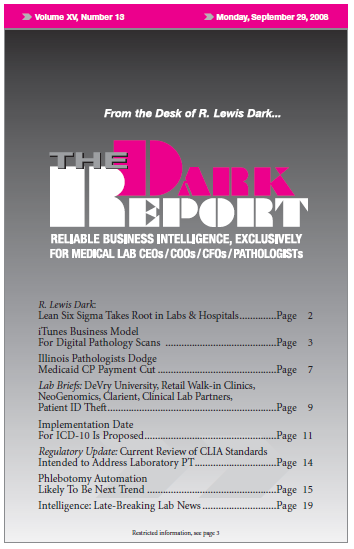CEO SUMMARY: If BioImagene’s CEO is to be believed, the company is ready to deliver a digital pathology system that is robust and affordable, even in settings with just two or three pathologists. One key to the BioImagene strategy is “per scan” pricing that avoids the need for upfront capital to acquire its system. Confident …
iTunes Business Model For Digital Path Scans Read More »
To access this post, you must purchase The Dark Report.


